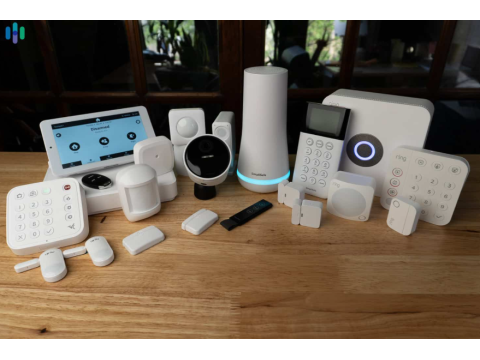Comprehensive Guide to Security Alarm Systems for Indoor and Perimeter Protection
Security alarm systems are sophisticated structures designed to detect and respond to unauthorized access or breaches. The key components include:
- Control Panels (PCP): Devices for managing and processing security signals.
- Detectors: Sensors that detect breaches or unusual activity.
- Signal Transmission Systems: Wired or wireless communication channels connecting components.
Control Panels (PCP): Features and Types
Control panels are the brains of any alarm system. They process data from sensors and manage notifications via visual, auditory, or digital signals.
Key Features:
- Interface Options: RS48, RS422, or Ethernet connectivity.
- Scalable Design: Modular systems allow for custom configurations.
- Integrated Functions: Many panels include GSM modules or sound/light alert controllers.
Classification by Capacity:
- Small Systems: 1–5 zones.
- Medium Systems: 5–20 zones.
- Large Systems: Over 20 zones.
Special Features:
- Support for environmental sensors like gas or water leakage detectors.
- Panels designed for extreme environments (non-heated or hazardous areas).
Indoor Security Sensors: Types and Applications
Magnetic Contact Sensors:
- Use: Detect door/window opening.
- Setup: Two parts: a magnet and a contact switch.
- Best For: Entry points like doors, windows, or hatches.
Infrared (IR) Detectors:
- Use: Detect motion within defined areas.
- Types: Linear, curtain, or volumetric.
- Applications: Hallways, windows, or room interiors.
Microwave Detectors:
- Use: Monitor for motion through radio frequency changes.
- Special Feature: Can detect through walls and be hidden behind panels.
Ultrasonic Sensors:
- Use: Identify movement via ultrasonic waves.
- Applications: Interior spaces or fragile barriers like glass.
Capacitive Sensors:
- Use: Monitor metal objects (safes, cabinets).
- Functionality: Detects capacitance changes from human proximity or contact.
Shock and Vibration Detectors:
- Use: Protect walls, ceilings, and safes from forced entry.
- Examples: Detect breaking, drilling, or hammering attempts.
Acoustic and Omic Sensors:
- Use: Monitor glass or walls for breaking sounds or structural integrity.
- Best For: Glass-heavy environments or basic structural monitoring.
Perimeter Security Sensors
Perimeter protection uses robust outdoor sensors designed for various environmental conditions.
Beam Sensors:
- Use: Infrared beams detect crossing objects.
- Applications: Fences, walls, or open perimeters.
Capacitive Perimeter Sensors:
- Use: Wires above fences detect attempts to climb or breach.
Microwave Barriers:
- Use: Radio waves monitor long perimeters up to 300 meters.
- Benefit: Effective across uneven terrain.
Vibration Sensors:
- Use: Monitor fences for climbing or cutting attempts.
- Applications: Mesh or welded fences (e.g., chain-link or decorative designs).
Key Considerations for Security System Installation
- Tailored Design: Match sensor types to specific vulnerabilities (e.g., windows, safes).
- Environmental Adaptation: Use outdoor-rated devices for exposed areas.
- Integration Options: Combine perimeter and indoor systems for comprehensive coverage.
For professional-grade security solutions, visit safsale.com to explore the latest technologies tailored to residential and commercial needs.
Advanced Security Systems for Safes
13/01/2025

